-
A Point of Light in the Stars.
Posted on April 29th, 2021 No commentsA unique effects solution to a Star Trek send-off
Deep Space Nine, the space station, was always a physical model except for the last shot of the series. For the final episode, “What you leave behind,” the last shot in the script called for a camera pull-back from Jake and Kira out a DS-9 window and away until the station was just another point of light in the stars.
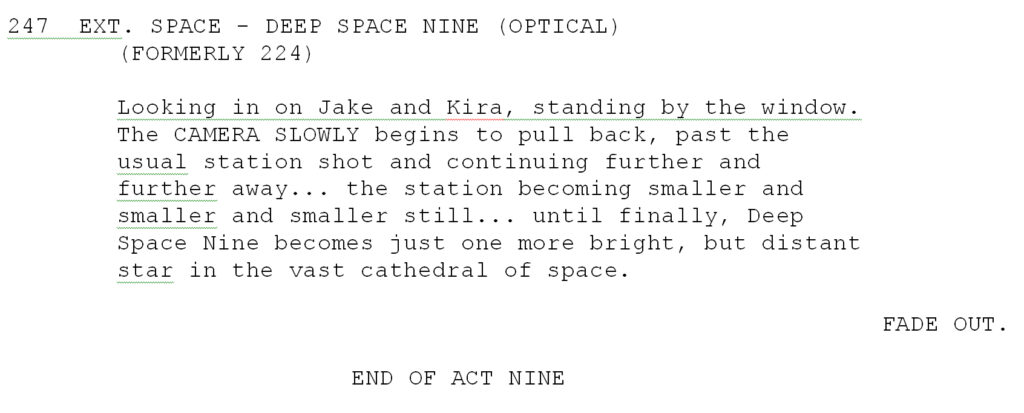
The challenges of this shot were enormous. We had to film a live-action camera zoom-out from Jake and Kira in the window on the set and later match that move and extend it to an infinite pull-back from a model. Using the existing DS-9 model was going to be a problem.
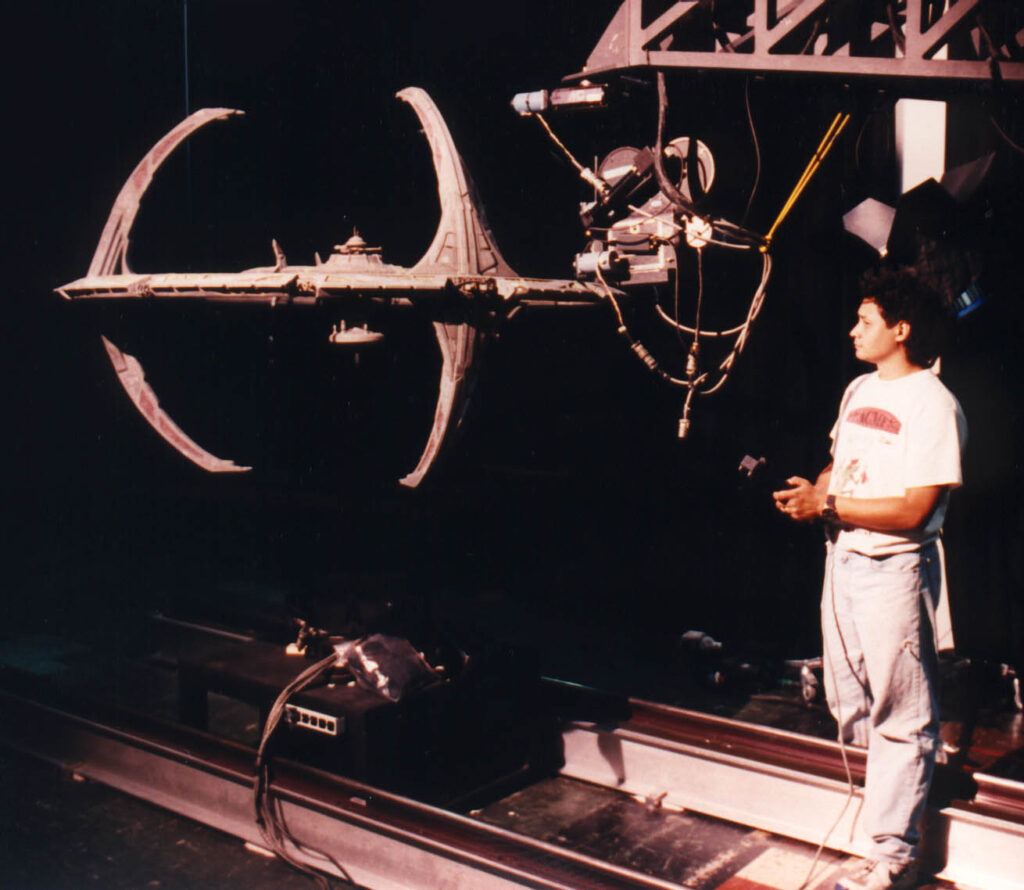
Cameraman Stephen Lebed with 6 ft DS-9
The physical DS-9 station model was only six feet across, so the windows were much too small to pull a camera lens through. We had access to a 32-foot motion-control track, but it was still too short to get the physical model small enough to work as required.
I approached the series producers expressed my concerns, and proposed a CGI (computer-generated imagery) solution. I encountered resistance to using a CGI DS-9 station initially because of budget fears and anti-CGI bias. Despite the success of CGI in the “Dominion war” sequences, there remained doubt that a digital DS-9 station would be good enough.

Meni Tsirbas
Because of prior visits with friends at Station X, a visual effects company in Los Angeles, I knew that one of their principal people, Aristomenis (“Meni”) Tsirbas, had constructed an accurate LightWave 3D version of the DS-9 station as a fun project for himself. It was an excellent piece of modeling based on the DS-9 Technical Manual.
Meni was eager to work on this shot and would make his digital model available to Star Trek. We visited the motion-control facility, Image G, and photographed the DS-9 station for subtle detail and textures. Meni and fellow artist, Enrique Munoz, enhanced the CGI model textures to photo-real levels.
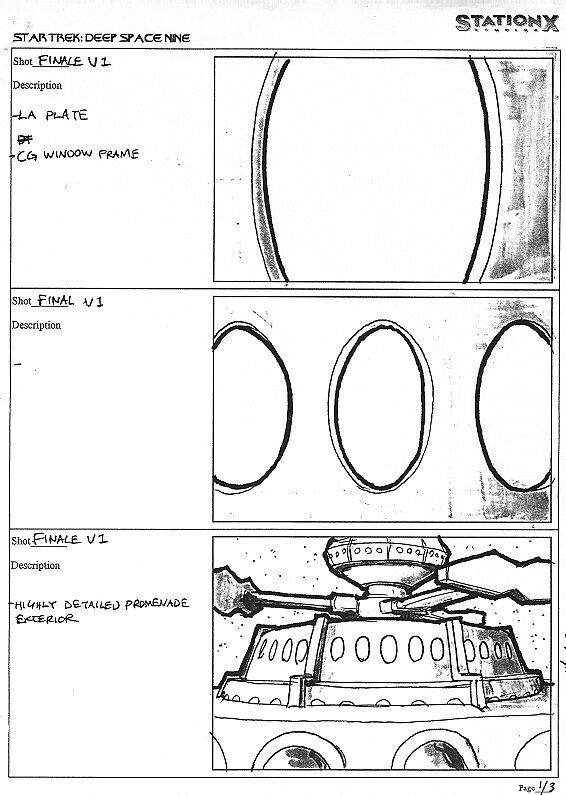
I showed Meni Tsirbas’ DS-9 model and storyboards to the producers and convinced them that this approach would work well.
As was typical to the Star Trek workflow, the film editors dropped in an eight to twelve-second slug of black leader into the show, represent the timing length for the pull-back shot.
Watching second after second of black leader feels excruciatingly long, so the producers balked when I suggested that the final shot be 30 seconds or longer. They complained that they had never incorporated that long of a VFX scene on DS-9.
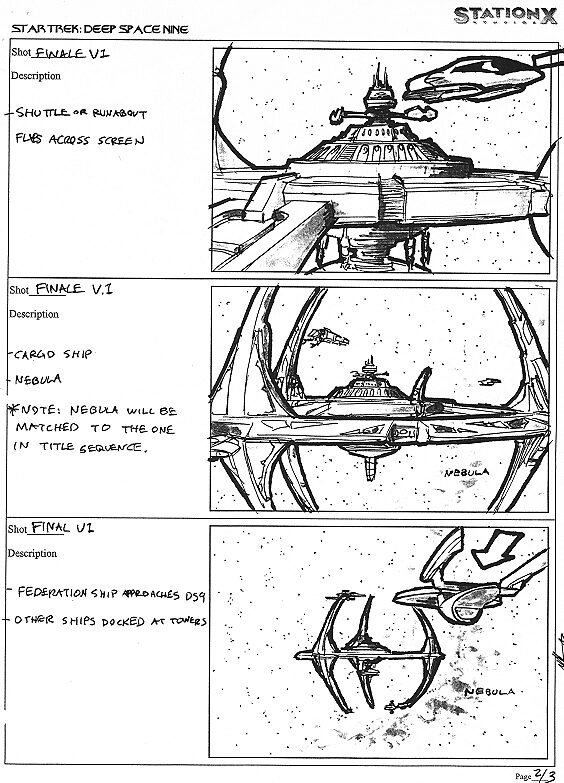
In response, Meni and I roughed out an animatic (a simple animation move test) to show what the pacing would be like on the final shot.
The animatic sold the timing, and Meni went to work with the final pull back.
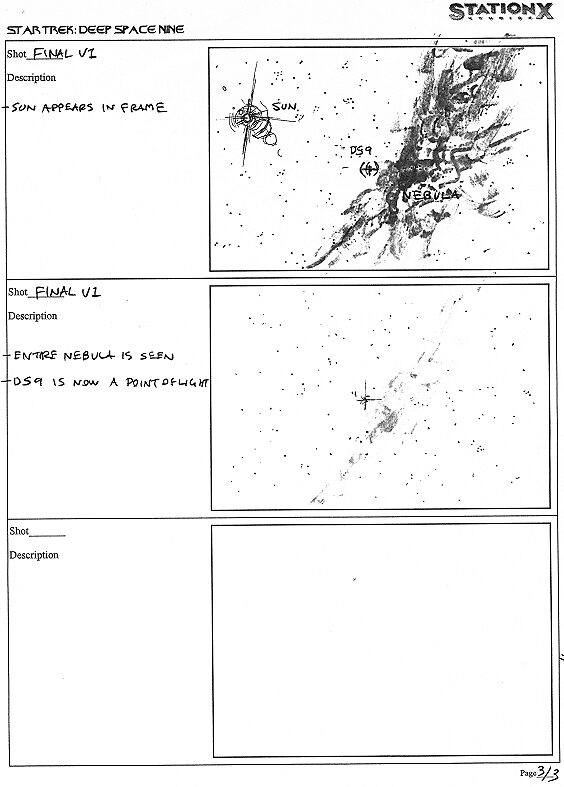
Meni enlisted Peter Baustaedter to paint a glorious nebula for the background.
There were some versions with a sun and additional space ships, but the producers settled upon a solitary DS-9 station.
With the credits and the live-action, the pull-back turned out to be about 50 seconds long and was a beautiful, poignant send-off of the series.

 DS-9, educational, Star Trek, Visual Effects Techniques DS-9, educational, Visual Effects Techniques
DS-9, educational, Star Trek, Visual Effects Techniques DS-9, educational, Visual Effects Techniques3 responses to “A Point of Light in the Stars.”
-
Dale A. Platt April 30th, 2021 at 14:56
Well done folks, Well Done!
-
This was a really interesting article. I appreciate that you showed us the shot at the end so we could see how it looked.
-
I never realized. Thanks for sharing this.
-


Recent Comments